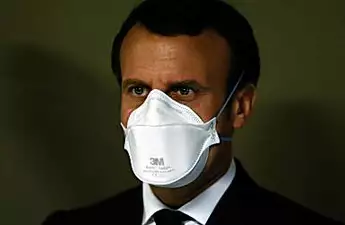Issued on: Modified:

ADVERTISING
Washington
From the first known patient in late January to now almost 100,000 infected, the United States has earned the unwanted distinction of leading the world in confirmed coronavirus cases.
Close to 1,500 people have succumbed to the COVID-19 illness -- though for now the death rate remains far lower than Italy and several European countries.
How did we get here? And what happens next?
- Testing, testing, testing -
Public health experts say that while we've yet to hit the peak of the US epidemic, there are several reasons why the COVID-19 disease has exploded in America.
Early on in the outbreak, President Donald Trump was accused of downplaying its severity, saying that sustained community spread was not "inevitable" even after a senior health official said it was, which could have led to a sense of complacency.
As the illness took root, first in the West Coast states of Washington and California, the US was unable to perform meaningful levels of contact tracing because it was so slow off the mark with testing.
The government initially refused to relax regulatory hurdles that would have allowed states and local health departments to develop their own test kits based on guidelines provided by the World Health Organization, and all early samples were being sent to the headquarters of the Centers for Disease Control and Prevention (CDC) in Atlanta.
Then the CDC sent out faulty test kits to the states, adding to delays.
It was not until February 29, the date of the first US death and more than a month after the first confirmed US case, that the government lifted its ban. The private sector entered later, adding to capacity.
"If we could have done contact tracing, we might have found a lot more cases quickly and shut down the hotspots," Doctor Gabor Kelen, director of emergency medicine at Johns Hopkins University, told us at France24.
US officials have defended their response, repeatedly asserting that tests developed by South Korea -- which is seen as an example of best practice for its aggressive early testing -- sometimes produced false positives.
Kelen disagreed with that reasoning.
"One thing I teach my residents: Something is better than nothing, sooner is better than later, and if one test is good, two are better. So let's get to it -- perfect is the enemy of good," he said.
- No national response -
Densely populated New York has emerged as the US epicenter of the outbreak, with almost 45,000 cases as of Friday -- about half the US total -- and over 500 deaths.
Neighboring New Jersey follows, then California and Washington state, then Michigan and Illinois in the Midwest, with clusters focused in major cities.
States or areas that haven't yet experienced surges should not be complacent, said Doctor Thomas Tsai, a general surgeon and professor of health policy at Harvard.
"The United States isn't one monolith, there are 50 different states with different government responses from governors and state public health departments," he told us at France24.
"I think what's needed is a truly national coordinated effort," said Tsai, warning that continuing with a "patchwork response" on people's movements would lead to other states seeing the types of surge experienced in places like New York.
As of Friday afternoon, 61 percent of the US population of 330 million was called to lockdown, meaning 39 percent is not.
- What now? -
One relative bright spot has been that the fatality rate in the US based on confirmed cases has remained relatively low so far -- 1.5 percent, compared to 7.7 percent in Spain and 10 percent in Italy.
Will this trend continue? The short answer is we don't know, and the experts are divided.
"Low CFR (case fatality rate) is not reassuring," David Fisman, an epidemiologist at the University of Toronto, told AFP.
"It will rise because it takes people time to die. My best guess is that the US is on the cusp of an absolutely disastrous outbreak."
The experts agreed that nationwide social distancing measures were urgently needed to continue to try to "flatten the curve" -- slowing the rate of infection so that hospitals aren't overrun, as the case is currently in New York.
But from a scientific point of view, the pathogen could "down mutate" and become less virulent as time goes on, said Kelen, as similar viruses typically do.
The heat and humidity of summer could also slow its spread, experts have said.
Forecasters at the University of Washington's School of Medicine believe the peak of the outbreak may come in mid-April with more than 80,000 deaths, based on current trends.
Their model suggests 38,000 deaths at the lower end and 162,000 at the higher end.
By way of comparison, influenza and pneumonia killed 34,000 people in the 2018-2019 flu season.


![[Pics] Pole Vaulter Allison Stokke Years After The Photo That Made Her Famous [Pics] Pole Vaulter Allison Stokke Years After The Photo That Made Her Famous](https://images.outbrainimg.com/transform/v3/eyJpdSI6IjNjYTAwNjY5N2I3Zjk1NzBmN2VjNDhiYmEzZjc1NjgyNWM2OWU1ODlmODljNTM3MTdiYTFlYTVlM2M1NTVhNzkiLCJ3IjoyMzAsImgiOjE1MCwiZCI6MS41LCJjcyI6MCwiZiI6NH0.webp)








No comments:
Post a Comment